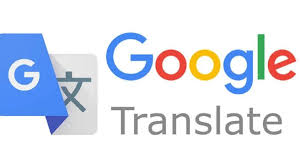Google Translate has made a significant leap forward by adding Tripura’s Kokborok language to its roster. This addition marks the largest-ever expansion of Google Translate’s language capabilities. The inclusion of Kokborok, a language spoken by the indigenous Tripuri people in the northeastern Indian state of Tripura, is a notable milestone in the quest for greater digital inclusivity.
Kokborok’s addition to Google Translate represents more than just an update to a digital tool; it signifies a broader movement towards recognizing and preserving linguistic diversity. For many speakers of Kokborok, this development offers a new level of accessibility and connectivity, bridging gaps between their language and the wider digital world.
The process of integrating Kokborok into Google Translate was extensive, involving the compilation of a substantial dataset and the development of sophisticated algorithms to ensure accurate translations. Google’s team worked closely with local language experts and community members to gather the necessary linguistic data, creating a robust foundation for the translation system.
The introduction of Kokborok to Google Translate also underscores the growing recognition of lesser-known languages in the digital age. Historically, many indigenous and regional languages have faced challenges in gaining representation on global platforms. By incorporating Kokborok, Google demonstrates its commitment to expanding language support and fostering a more inclusive digital environment.
For users, this means that they can now translate text between Kokborok and other languages supported by Google Translate, enhancing their ability to communicate and access information. This advancement is particularly significant for education, government services, and personal interactions, where language barriers often pose obstacles.
Kokborok, which belongs to the Tibeto-Burman language family, is spoken by millions of people in Tripura and the surrounding regions. The language holds cultural and historical importance for the Tripuri community, and its inclusion in Google Translate helps to preserve and promote this heritage. For many, the ability to see their native language represented on a global platform is a source of pride and validation.
The addition of Kokborok also highlights the evolving landscape of language technology. As digital tools become increasingly integral to everyday life, the demand for multilingual support grows. Google’s decision to add Kokborok reflects a broader trend towards accommodating a diverse array of languages, catering to the needs of users from various linguistic backgrounds.
This expansion aligns with Google’s broader mission to make information universally accessible and useful. By incorporating languages like Kokborok, the company helps to address the digital divide and ensures that more people can engage with technology in their native languages. This move not only benefits individual users but also contributes to the preservation of linguistic diversity.
The impact of this development extends beyond mere translation. It represents a step towards greater digital equity, where people from different linguistic communities can participate more fully in the digital world. Access to translation services in native languages can empower users, enabling them to interact with digital content, access services, and connect with others more effectively.
As Google Translate continues to expand its language offerings, the inclusion of Kokborok sets a precedent for future updates. It serves as a reminder of the importance of recognizing and valuing linguistic diversity in the digital age. The addition of Kokborok is a testament to the evolving capabilities of language technology and its potential to bridge cultural and linguistic gaps.
Overall, the integration of Tripura’s Kokborok language into Google Translate marks a significant achievement in the realm of language technology. It highlights the importance of including diverse languages in digital platforms and represents a positive step towards more inclusive and accessible communication tools. This development not only benefits Kokborok speakers but also sets a powerful example of how technology can support and celebrate linguistic diversity.



